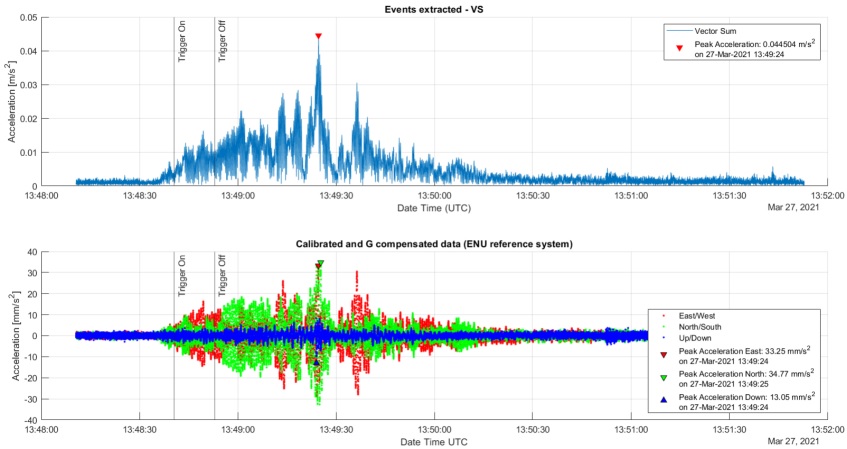ZTE along with the University of L’Aquila in collaboration with the Municapality, a use case on the earthquake.
Structural Health Monitoring- Health Earth is a solution that allows to report the arrival of the shock wave of an earthquake 10 second in advance. The usecase is due to the studies of the Faculty of Telecommunications Engineering of the Abruzzo Capital, L’Aquila, and to the 5G signal made by the Chinese multinational that made Italy one of its most important country in Europe.

The solution uses mathematical modelling to determine the installation sites for a large number of sensors at the most suitable locations in the buildings and analyses the condition of the buildings through monitoring data returned by the sensors. The automated generated reports show accurate information and can be shared on real time.
As depicted by the graph 14:47 on 27th March 2021, several seismic events occurred in the area of the South Adriatic Sea. The strongest earthquake recorded a magnitude of Mw 5.2 at 11 km depth. Although this event was more than 240 km away from the sensors deployed, Figure 1 Automated Data clearly shows the recording of this event in the automatically generated report, which includes the traces of the accelerometers’axes (with the detection times and the indicated peaks of accelerometers’values).
The technicians have reproduced a scale model of a building demonstrating, in real time, how much the alert can anticipate the actual impact of the shock wave in residential areas.Therefore, the usecase was developed by simulating the terrible earthquakes of L’Aquila and Amatrice, in which more than 500 people died.
The accomplishments of this innovation have been so important that the Municipal Administration of Rome, chaired by Virginia Raggi, asked to replicate it by monitoring, for a 6 month period, the structures of the ancient Palazzo Senatorio, located in Piazza del Campidoglio, in the heart of the Capital.Since the earthquake in 2009, the Municipality of L’Aquila is sensitive to the safety of their people, hence ZTE had the opportunity to help provide solution that will ease the pressure on them whilst monitoring the structures. This ensure that emergency services can be provided and when needed without any delay.
With the success of monitoring and surveillance in Italy, the solution can be translated to other countries, such as Nepal, which has active volcanoes or is prone to natural disasters. ZTE will continue to provide these social benefits so that we can add value to businesses and enhance peoples quality and standard of living.